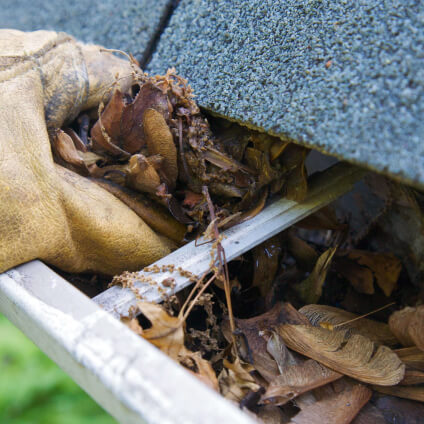Preventing Mulch Fires

Mulch is a combustible material that can be easily ignited by improperly discarded smoking materials. Hundreds of small and large fires are started this way every year. The risk is that what starts as a small outdoor mulch fire can quickly spread to buildings. A mulch fire can be well underway before someone notices or is alerted by smoke alarms or sprinkler systems activating.
Regulation on Mulch Safety
Safe use of mulch is regulated through 527 CMR 1.00, section 10.14.10.4. The regulation prohibits new application of mulch within 18" around combustible exteriors of buildings, such as wood or vinyl, but not brick or concrete. Residential buildings with six units or less are exempted from the regulation, but all homeowners may want to adopt these safety practices. The regulation applies to all other buildings including commercial properties.
Tips for Property Managers, Building Owners & Landscapers
- Provide a minimum of an 18-inch clearance between landscape mulch beds and combustible building materials, such as wood, vinyl siding and decks.
- Use non-combustible mulch such as rock or pea stone around gas meters and combustible portions of the structure.
- Provide proper receptacles for smoking materials at all entrances to public buildings and in designated smoking areas. Place them at least 18" away from the building, do not mulch in these areas and remember to regularly empty smoking receptacles.
- Grounds and maintenance crews should be aware when conditions are favorable for mulch fires and increase surveillance of mulch beds.
- Keep mulch beds moist when possible.
Million Dollar Mulch Fires
- The most notable mulch fire in Massachusetts occurred in May 2015 in a large Arlington apartment complex. One man died in the fire started by smoking materials discarded in a mulch bed, which spread to a car, then to the building. Thirty-six apartments and six cars were destroyed. The building had no sprinklers and the estimated dollar loss was $6.7 million.
- In April 2012, improperly discarded smoking materials ignited mulch outside an assisted living center in Braintree. The fire forced many older adults to evacuate in the early morning hours. Several suffered smoke inhalation injuries.
- In May 2008, a cigarette ignited a mulch fire at a Peabody apartment complex. It caused $6.7 million in damage to the building, displaced 750 people temporarily and 36 permanently.
Report Mulch Fires
- If you see anything smoking in a landscape bed, put it out if you can and report it. If the burning material is not thoroughly wet or removed it can re-ignite.
- Report any smoke or fire by calling 9-1-1.
Be a Responsible Smoker:
Put It Out. All the Way. Every Time.
- If you smoke, remember to properly dispose of all smoking materials.
- Always use appropriate receptacles for disposing of smoking materials and matches.
- Do not discard cigarettes in mulch or potted plants.
- Use ashtrays that won't burn or catch fire and that are deep enough to contain butts. Wet butts down before throwing out.
- As more people smoke outdoors rather than inside, many building fires started by smoking begin on decks, porches, and exterior stairways.
- Be smart in your choice of containers for butts. Consider using metal cans with sand for outdoor disposal.
- Never throw lit smoking materials out of a car window. It is a fire risk and it is illegal to do so. The penalty for throwing lit materials from a car is a fine of $100 and/or thirty days imprisonment (M.G.L. c. 148 § 54).
How Mulch Fires Start.
Care must be taken to prevent mulch fires.
- In many mulch fires, the smoldering mulch tunnels under the surface and then breaks out into open flame.
- Mulch that is piled too deeply, more than a few inches, can build up heat and spontaneously catch fire.
- Mulch fires start more readily when the weather is hot and it has been dry for an extended time.
- Factors such as below-average rainfall, dry conditions, warm temperatures, and high winds increase the risk of mulch fires. Storage and Manufacturing of Mulch
- 527 CMR 1.00, section 10.14.10.4 has safety requirements for those who store or manufacture mulch. It limits the size of mulch piles and requires a distance of 30-feet between piles and 25-feet from the lot line.
- Large piles of mulch can spontaneously combust from all the heat they generate, so it is important to be vigilant and employ good housekeeping. The distance between mulch piles keeps a fire from spreading from one pile to another, or to a building.





